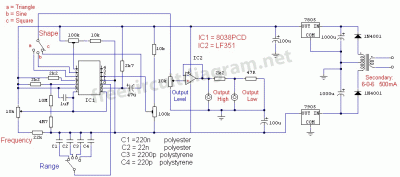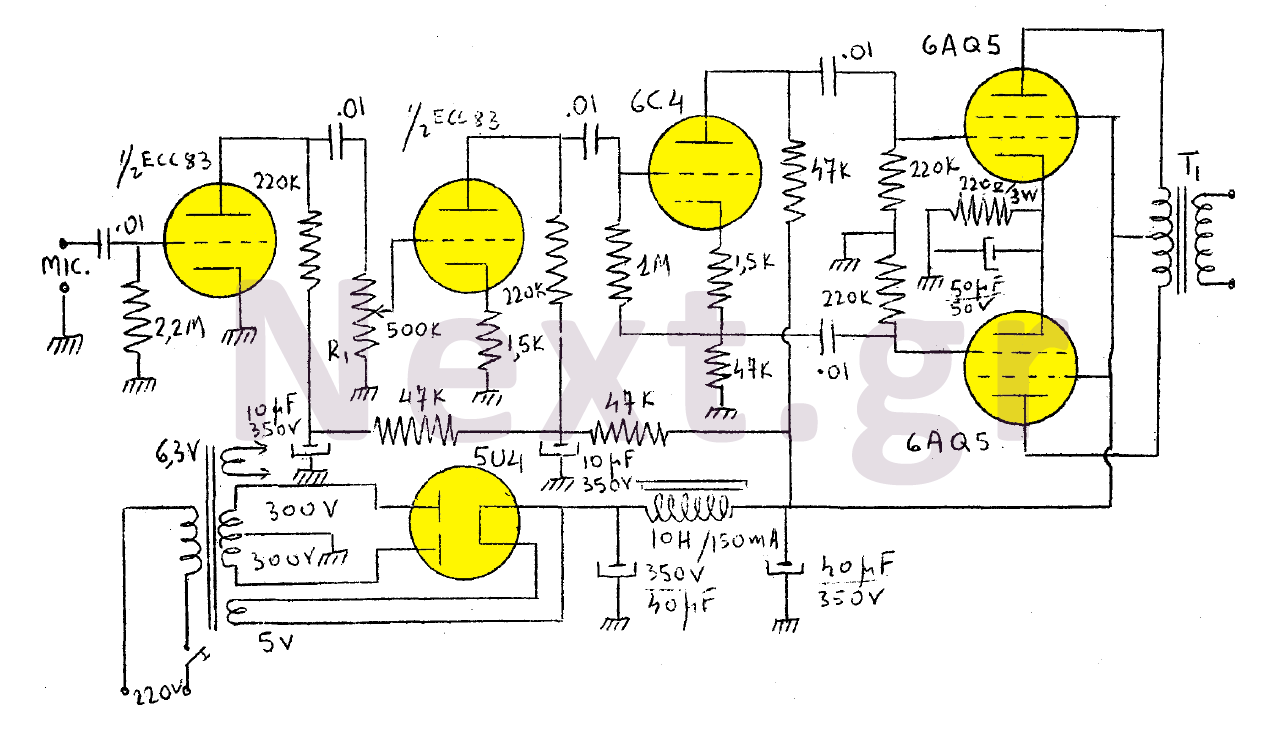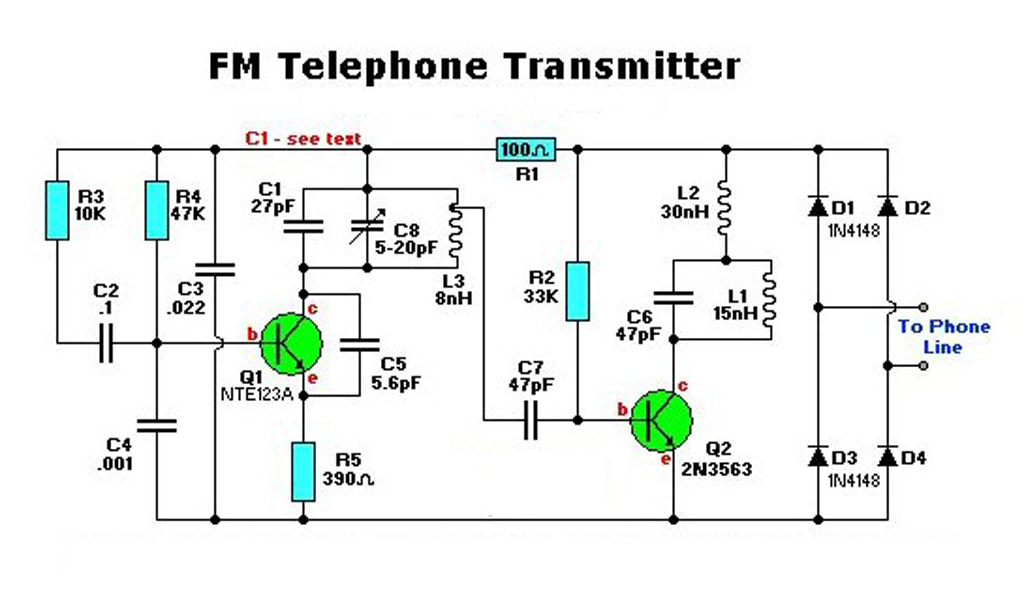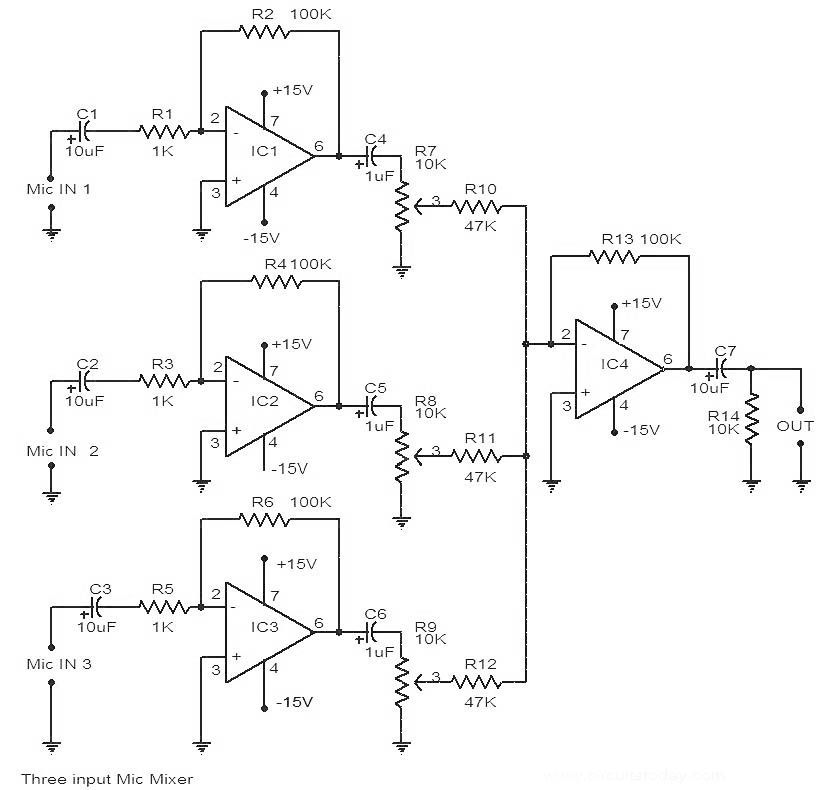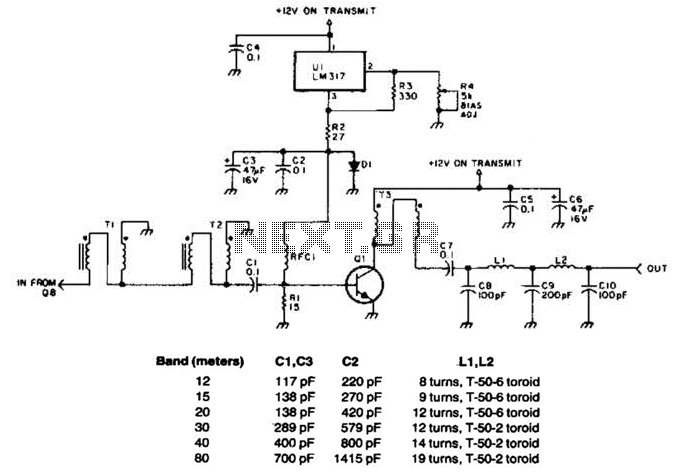
TDA6106Q having a feedback factor of the test circuit diagram 1 116

The TDA6106Q test circuit, as depicted in the provided figure, operates with a feedback factor of 1/116. The input signal, Vin, is received from the input network consisting of resistors R1, R9 and capacitors C1, C2. The TDA6106Q IC features a differential input stage with an inverting input. The amplified signal is output from pin 8 and is processed through a network of resistors R2, R3 and capacitors C7, C8, C9, which form a probing circuit. A feedback network is created between pins 3 and 9 using resistor R10 and capacitor Cpar, which stabilizes the automatic black level. Additionally, a bootstrap capacitor, Cn, is connected between pins 8 and 9, which enhances the dynamic range of the output. The output terminal at pin 8 includes a cathode discharge protection mechanism, capable of handling a positive voltage spike from a high-impedance source with a maximum capacity of 100 C and 5A current. Conversely, it can withstand up to 100nC and 10A current from a low-impedance source. It is essential to add decoupling capacitors to the power supply terminal at pin 6.
The TDA6106Q is a versatile integrated circuit designed for video applications, particularly in signal amplification and processing. The circuit architecture begins with the input stage, where the incoming video signal is filtered and conditioned using an input network composed of resistors R1 and R9, along with capacitors C1 and C2. This network ensures that the signal is appropriately scaled and shaped for optimal performance within the TDA6106Q's differential input stage.
The differential input stage is crucial for rejecting common-mode noise and enhancing the signal-to-noise ratio. The inverting input configuration allows for effective signal amplification, with the gain set by the feedback factor of 1/116, determined by the feedback network formed by R10 and Cpar. This feedback mechanism not only stabilizes the output but also plays a vital role in maintaining the black level of the video signal, ensuring consistent image quality.
The output stage, accessed through pin 8, is designed to drive subsequent stages or loads. The signal is further processed through a series of passive components, including resistors R2, R3 and capacitors C7, C8, C9, which can be configured to tailor the frequency response and output characteristics as needed for specific applications.
The inclusion of a bootstrap capacitor Cn between pins 8 and 9 enhances the dynamic range of the output, allowing the circuit to handle varying signal levels without distortion. This feature is particularly beneficial in video applications where signal integrity is paramount.
The cathode discharge protection mechanism integrated into pin 8 is a critical safety feature. It safeguards the circuit against voltage spikes that may occur from high-impedance sources, ensuring that the output can tolerate transient conditions without damage. The specifications indicate that it can handle significant current levels, making it robust for various operating environments.
Finally, the power supply requirements for the TDA6106Q necessitate the addition of decoupling capacitors at pin 6. These capacitors are essential for filtering out noise from the power supply, providing stable voltage levels to the IC, and ensuring reliable operation. Proper decoupling is crucial for maintaining the performance of the circuit, especially in high-frequency applications. Overall, the TDA6106Q test circuit exemplifies a well-designed approach to video signal amplification and processing, incorporating key features for stability, performance, and protection. As shown in FIG TDA6106Q test circuit with feedback factor is 1/116. After the input signal Vin from the input network R1, C1, C2, R9 enter TDA6106Q composed of 3 feet, 3 feet inside the differential input stage inverting input. The amplified signal from the 8-pin output, output through a network of R2, R3, C7, C8, C9 formed to probe. 3,9 feet between resistor R10 and capacitor Cpar feedback network, from the current automatic black level stabilizing role.
8,9 feet between the resistance and capacitance Cn bootstrap capacitor, the output from the expansion of the dynamic range of action. 8-pin output terminal having a cathode discharge protection, when the high-impedance source to generate a positive voltage spike discharges can withstand 100 C largest capacity 5A current; when the low-impedance source to generate a positive voltage spike discharges can withstand 100nC maximum 10A current capacity.
Power supply terminal (pin 6) must be added decoupling capacitors.
The TDA6106Q is a versatile integrated circuit designed for video applications, particularly in signal amplification and processing. The circuit architecture begins with the input stage, where the incoming video signal is filtered and conditioned using an input network composed of resistors R1 and R9, along with capacitors C1 and C2. This network ensures that the signal is appropriately scaled and shaped for optimal performance within the TDA6106Q's differential input stage.
The differential input stage is crucial for rejecting common-mode noise and enhancing the signal-to-noise ratio. The inverting input configuration allows for effective signal amplification, with the gain set by the feedback factor of 1/116, determined by the feedback network formed by R10 and Cpar. This feedback mechanism not only stabilizes the output but also plays a vital role in maintaining the black level of the video signal, ensuring consistent image quality.
The output stage, accessed through pin 8, is designed to drive subsequent stages or loads. The signal is further processed through a series of passive components, including resistors R2, R3 and capacitors C7, C8, C9, which can be configured to tailor the frequency response and output characteristics as needed for specific applications.
The inclusion of a bootstrap capacitor Cn between pins 8 and 9 enhances the dynamic range of the output, allowing the circuit to handle varying signal levels without distortion. This feature is particularly beneficial in video applications where signal integrity is paramount.
The cathode discharge protection mechanism integrated into pin 8 is a critical safety feature. It safeguards the circuit against voltage spikes that may occur from high-impedance sources, ensuring that the output can tolerate transient conditions without damage. The specifications indicate that it can handle significant current levels, making it robust for various operating environments.
Finally, the power supply requirements for the TDA6106Q necessitate the addition of decoupling capacitors at pin 6. These capacitors are essential for filtering out noise from the power supply, providing stable voltage levels to the IC, and ensuring reliable operation. Proper decoupling is crucial for maintaining the performance of the circuit, especially in high-frequency applications. Overall, the TDA6106Q test circuit exemplifies a well-designed approach to video signal amplification and processing, incorporating key features for stability, performance, and protection. As shown in FIG TDA6106Q test circuit with feedback factor is 1/116. After the input signal Vin from the input network R1, C1, C2, R9 enter TDA6106Q composed of 3 feet, 3 feet inside the differential input stage inverting input. The amplified signal from the 8-pin output, output through a network of R2, R3, C7, C8, C9 formed to probe. 3,9 feet between resistor R10 and capacitor Cpar feedback network, from the current automatic black level stabilizing role.
8,9 feet between the resistance and capacitance Cn bootstrap capacitor, the output from the expansion of the dynamic range of action. 8-pin output terminal having a cathode discharge protection, when the high-impedance source to generate a positive voltage spike discharges can withstand 100 C largest capacity 5A current; when the low-impedance source to generate a positive voltage spike discharges can withstand 100nC maximum 10A current capacity.
Power supply terminal (pin 6) must be added decoupling capacitors.
